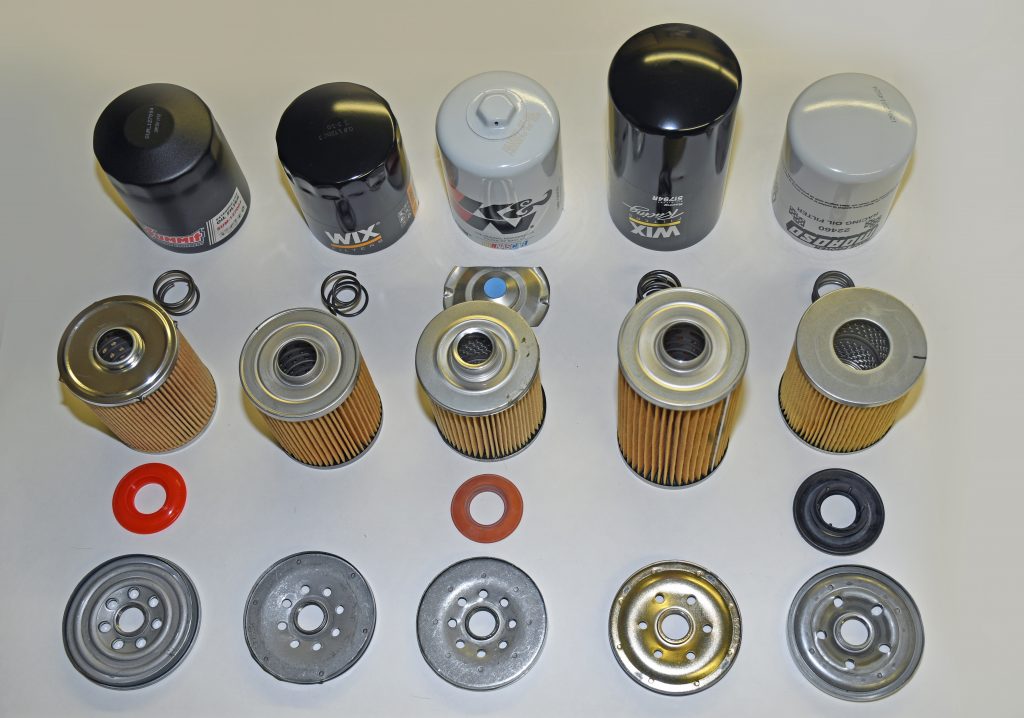
There are all sorts of engine oil filters out there. In fact, a trip to our favorite auto parts website will reveal thousands of oil filters available for any number of engine applications. That’s probably no surprise to anyone here.
The catch is, most spin-on filters look pretty much the same on the outside. There’s the occasional difference sure, like the 1-inch hex nut K&N includes on the bottom. But the major differences are all found on the inside.
So, let’s slice a few open and see what’s in there.
How Oil Filters Work
But before we look inside some popular oil filters, let’s examine how the oil is directed in and out of the filter. We’ll use a common small (and big) block Chevy as the example:
Oil is pumped from the engine oil gallery through a series of holes located in the filter baseplate (sometimes called a “tapping plate”). From here, oil is forced between the wall of the metal canister and the pleated filter element. Each end of the internal filter medium is fitted with metal support caps (AKA discs).
The center of the canister is equipped with an inner support tube. That inner support tube is perforated, either with holes or with louvers. Oil pressure forces the lubricant through the filter medium where it exits through the support tube. Filtered oil is then routed through the center hole in the support tube (or “pipe”), back into the engine.
If the filter is equipped with a bypass valve, that’s often located in the lower end cap of the element, although there are some applications where the bypass valve is located at the end cap closest to the baseplate. The bypass valve “engages” if the filter becomes plugged. This allows non-filtered oil to circulate through the engine, however it prevents the filter from being blown off if plugged.
Most filters are equipped with a spring between the canister support cap and the end of the canister. This spring can be used for two jobs: In some applications, it sets the pressure relief (however this isn’t used in all filters). The main job of this spring is to securely hold the pieces of the filter together while under pressure.
At the top end of the filter (at the support cap), you’ll sometimes find a rubber one-way valve that covers the series of holes in the baseplate. This is an anti-drainback valve. It prevents oil from migrating out of the filter following shut down. As a result, the engine always has oil in the filter during a fresh start up.
Our Test Filters
Most filters use a mix of the above in order to function. But what we still don’t know is what the filters are like inside. For our purposes, we selected five different (but popular) filters for a really common Chevy engine application:
- Summit Racing Extended Life oil filter (SUM-127004)
- Wix replacement filter (WIX-51061)
- K&N Performance Gold oil filter (KNN-HP-3002)
- Wix Race oil filter (WIX-51794R)
- Moroso Racing oil filter (MOR-22460)
We should point out that we’re not going to rate any of the filters or declare any “winners.” The idea here is to show you what’s inside and, from that, you can draw your own conclusions.
We’ll give you a brief description of each filter and some key specs, then you can keep scrolling for a collection of filter pics at the bottom of the article.
***
Summit Racing Extended Life Oil Filter (SUM-127004)
The canister is steel and measures 0.022-inch thick. The canister is texture powder-coated, so it’s easier to grip with oil-covered hands. Threads in the baseplate are rolled. The baseplate is fitted with seven 9/32-inch holes. The anti-drainback valve is a silicone material. The filter is equipped with a bypass relief valve in the end cap of the element and it is equipped with an internal relief spring. The pleated filter element measures 4.105 by 3.265-inches, including both end caps. There are 68 pleats and they measure approximately 0.600-inch deep. It has a maximum flow rate of 9-10 gallons per minute.
Thread: 13/16-16 in.
Height: 5.120 in.
O.D.: 3.660 in.
Bypass Relief Valve: Yes
Anti-Drainback Valve: Yes
Filtration: 25 microns
Burst Pressure: 241 psi
Gasket O. D.: 3.550 in.
Gasket I. D.: 3.170 in.
Gasket Thickness: 0.270 in.
***
WIX Oil Filter (WIX-51061)
The canister is steel and it measures 0.022-inch thick. Threads in the baseplate are rolled. The baseplate is fitted with eight 15/64-inch holes. There is no anti-drainback valve and there is no bypass relief valve. The pleated filter element measures 4.315 by 3.225-inches, including both end caps. There are 59 pleats and they measure approximately 0.6375-inch. It has a flow rate of 9 to 11 gallons per minute.
Thread: 13/16-16 in.
Height: 5.178 in.
O.D.: 3.660 in.
Bypass Relief Valve: No
Anti-Drainback Valve: No
Filtration: 21 microns
Burst Pressure: 285 psi
Gasket O.D.: 3.444 in.
Gasket I.D.: 3.100 in.
Gasket Thickness: 0.260 in.
***
K&N Performance Gold Oil Filter (KNN-HP-3002)
The canister is steel and it measures 0.022-inch thick. Threads in the baseplate are rolled. The baseplate is fitted with eight 1/4-inch holes. The anti-drainback valve is a silicone material. The filter is equipped with a separate bypass relief valve that’s located in the end cap of the element and it is equipped with an internal relief spring. The pleated filter element measures 4.185 by 3.2-inches, including both end caps. There are 54 pleats and they measure approximately 0.700-inch.
Thread: 13/16-16 in.
Height: 5.52 in.
O.D.: 3.770 in.
Bypass Relief Valve: Yes
Anti-Drainback Valve: Yes
Filtration: 10 microns
Burst Pressure: 550 psi
Gasket O.D.: 3.330 in.
Gasket I.D.: 3.115 in.
Gasket Thickness: 0.285 in.
***
WIX Racing Oil Filter (WIX-51794R)
The canister is steel and it measures 0.022-inch thick. Threads in the baseplate are rolled. The baseplate is fitted with six 1/4-inch holes. There is no anti-drainback valve and there is no bypass relief valve. The pleated filter element measures 6.50 by 3.215-inches, including both end caps. There are 44 pleats and they measure approximately 0.675-inch. It has a flow rate of 28 gallons per minute.
Thread: 13/16-16 in.
Height: 7.820 in.
O.D.: 3.674 in.
Bypass Relief Valve: No
Anti-Drainback Valve: No
Filtration: 21 microns
Burst Pressure: 285 psi
Gasket O.D.: 3.444 in.
Gasket I.D.: 3.100 in.
Gasket Thickness: 0.260 in.
***
Moroso Race Oil Filter (MOR-22460)
The canister is steel and it measures 0.022-inch thick. Threads in the baseplate are rolled. The baseplate is fitted with five 17/64-inch holes. There is a two-piece anti-drainback valve, however there is no bypass relief valve. The pleated filter element measures 4.145 by 3.40-inches, including both end caps. There are 69 pleats and they measure approximately 0.800-inch.
Thread: 13/16-16 in.
Height): 5.250 in.
O.D.: 3.660 in.
Bypass Relief Valve: No
Anti-Drainback Valve: No
Filtration: 27 microns
Burst Pressure: 350 psi
Gasket O.D.: 3.420 in.
Gasket I.D.: 3.110 in.
Gasket Thickness: 0.211 in.
***
For a closer look at the filters (both complete and dissected) check out the photos below.
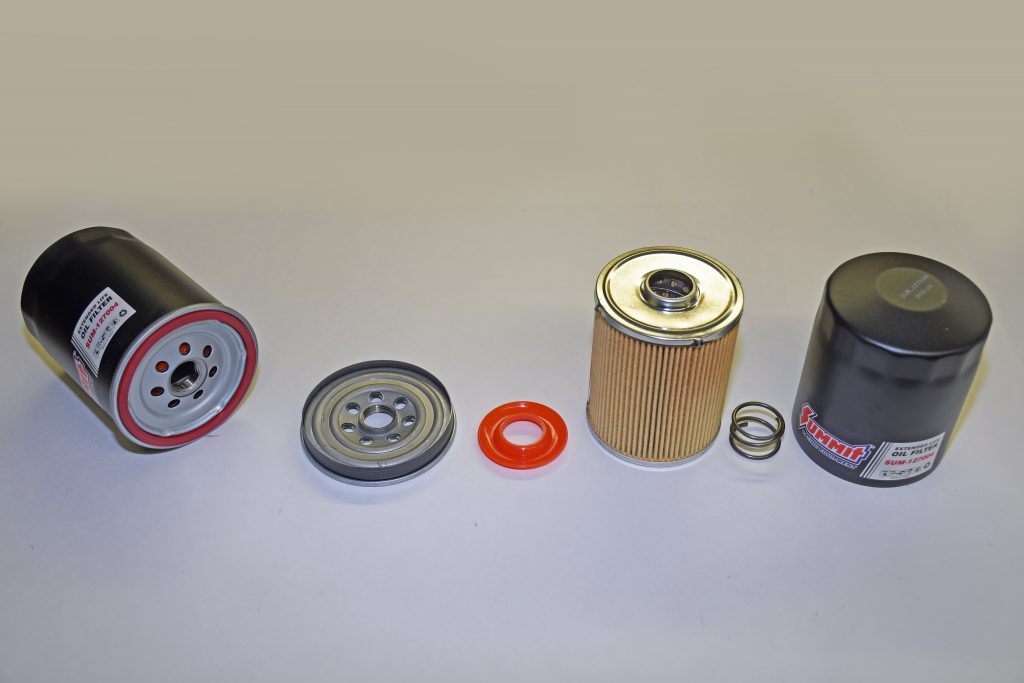
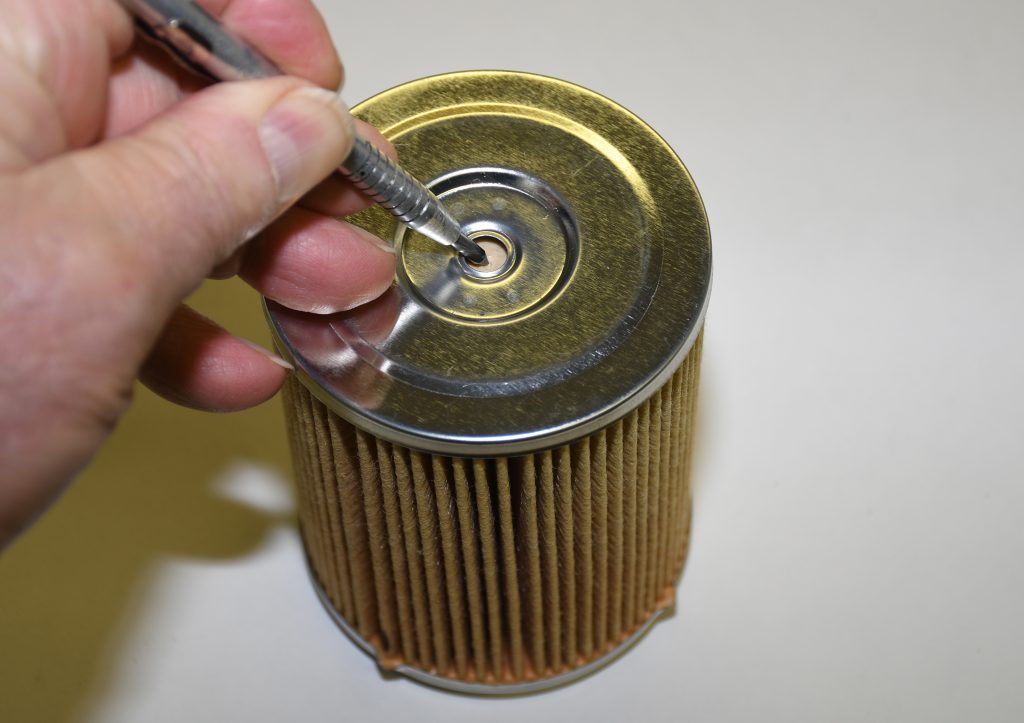
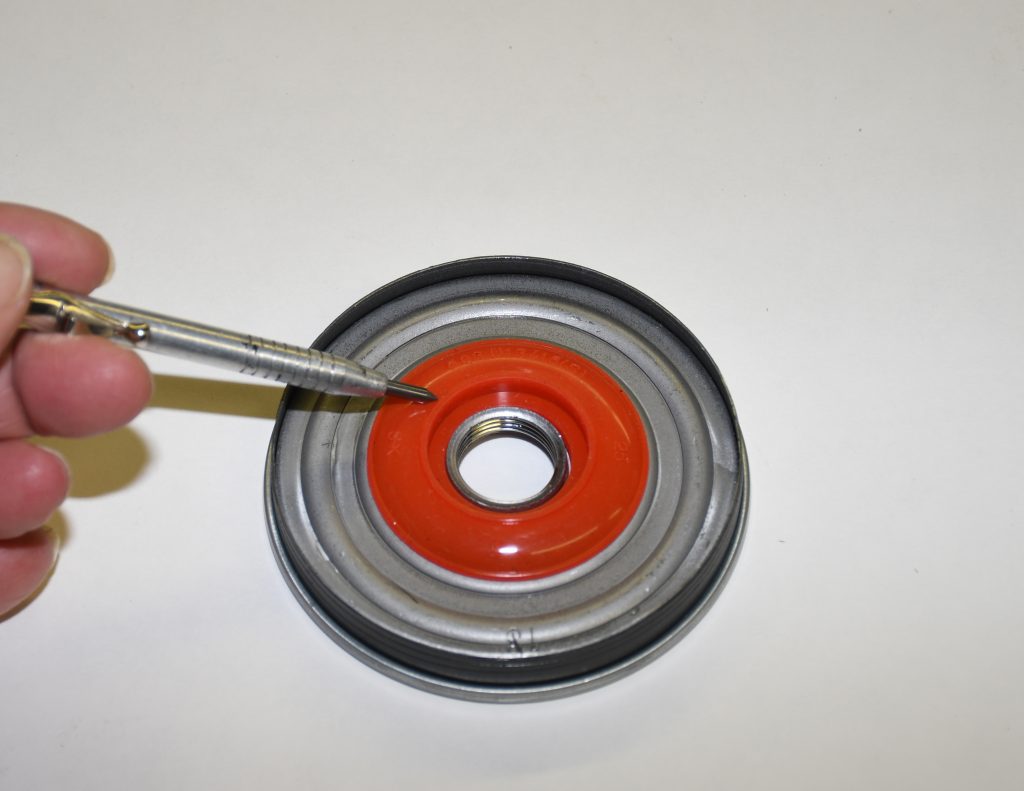
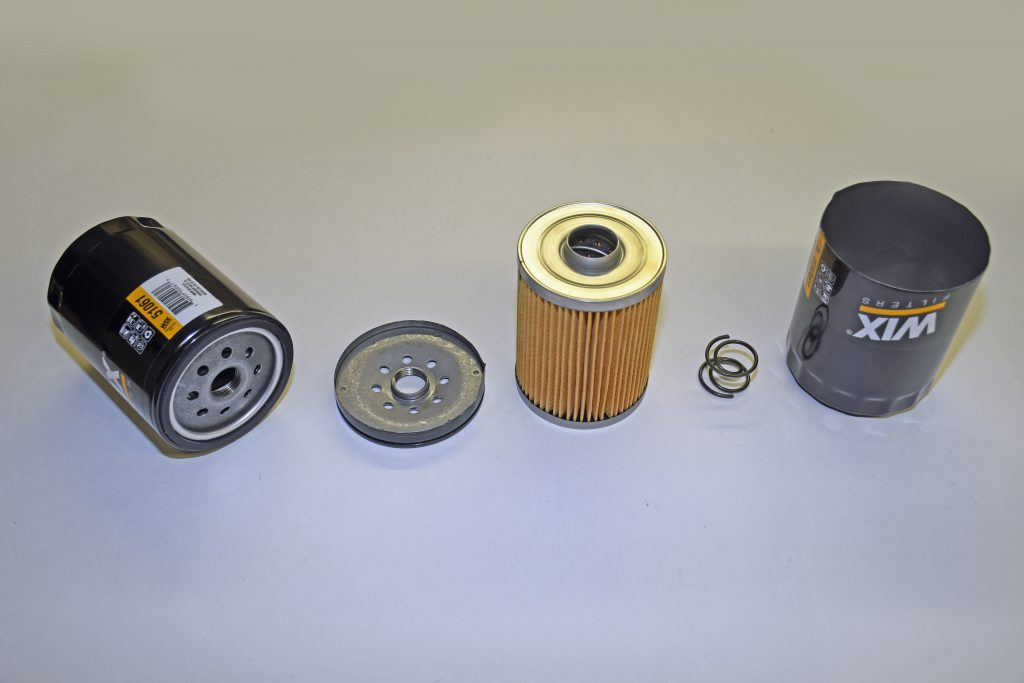
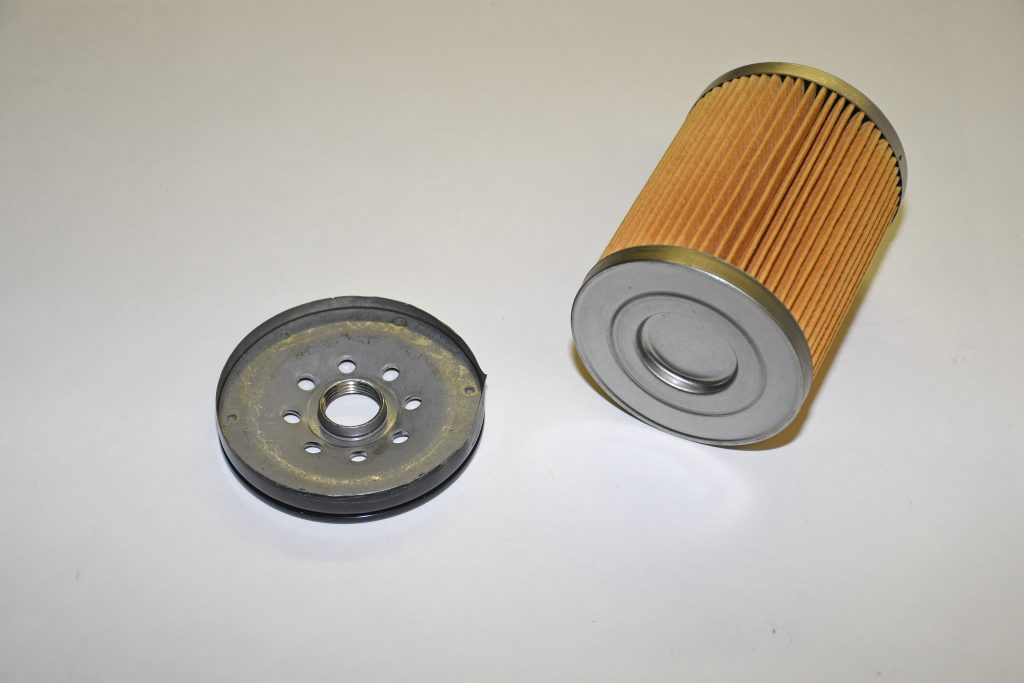
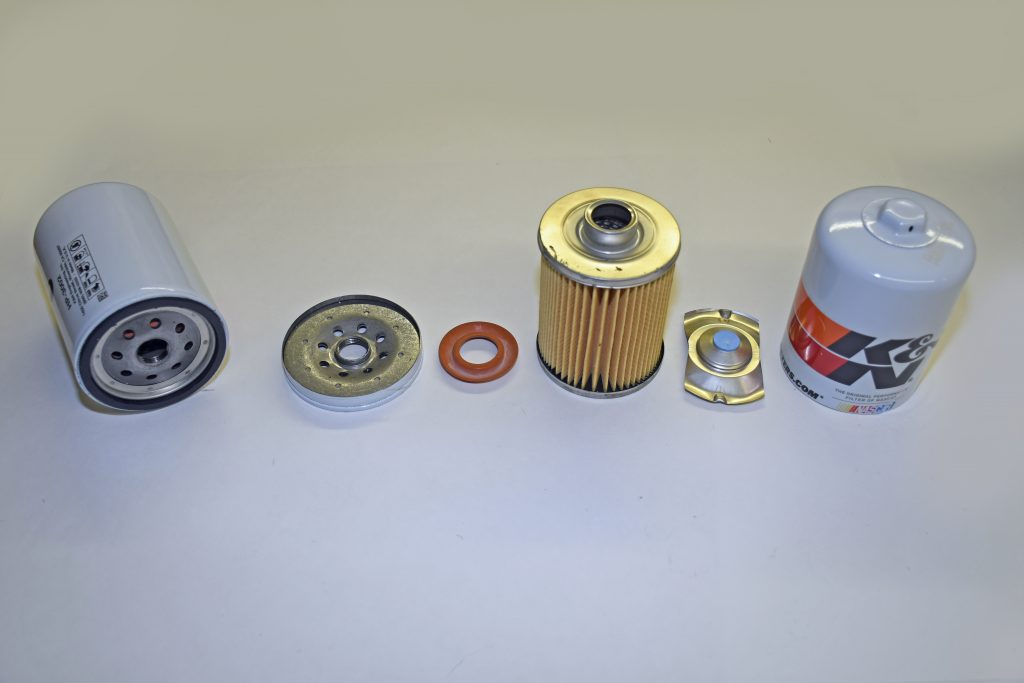
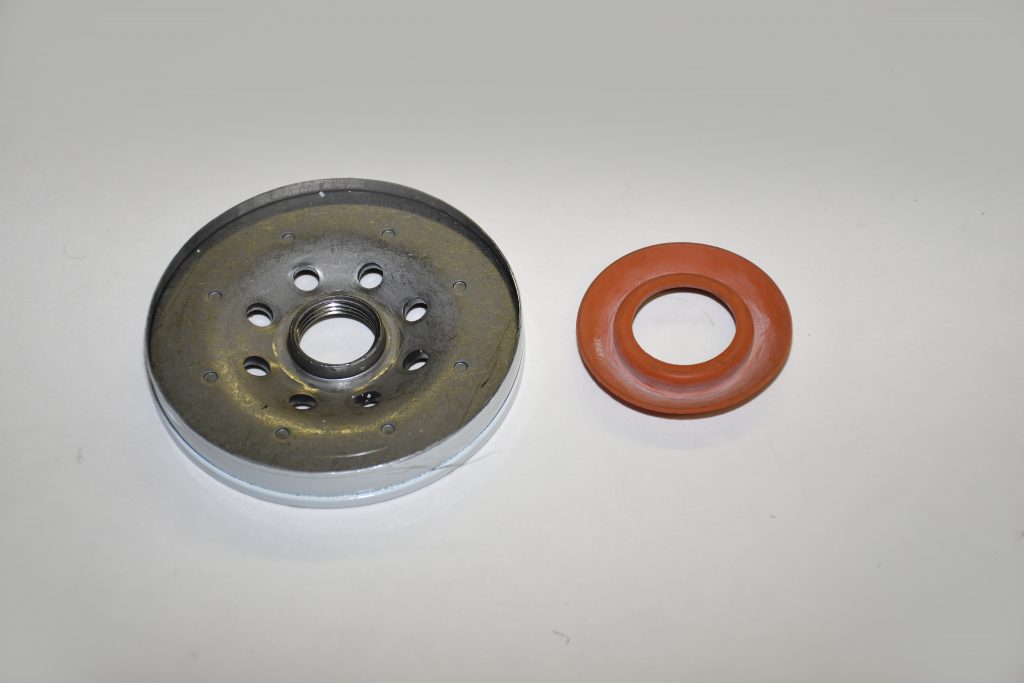
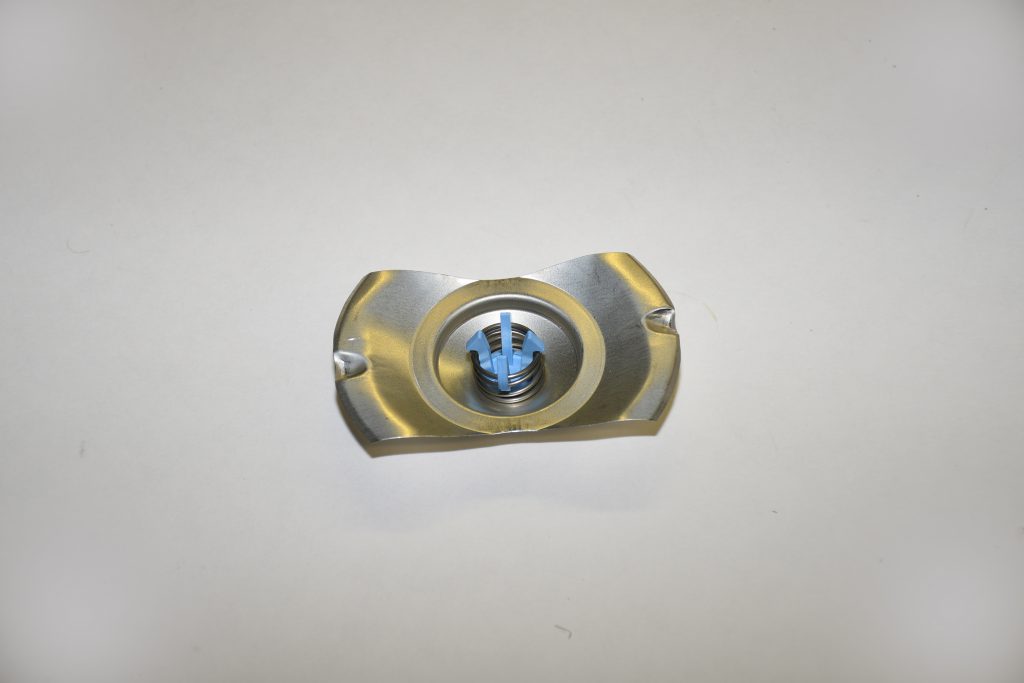
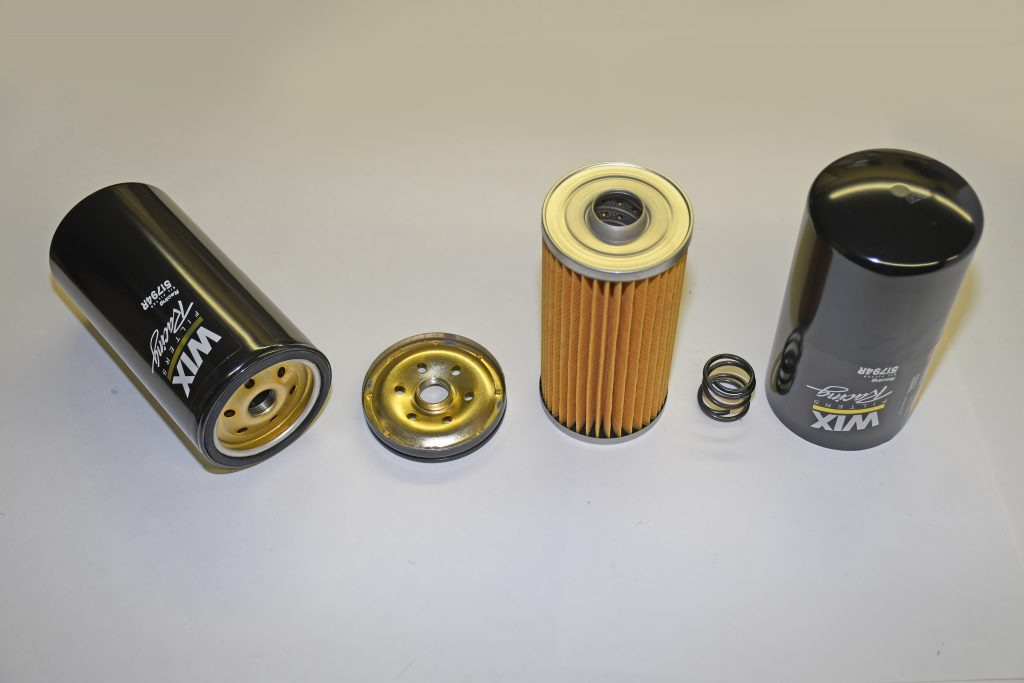
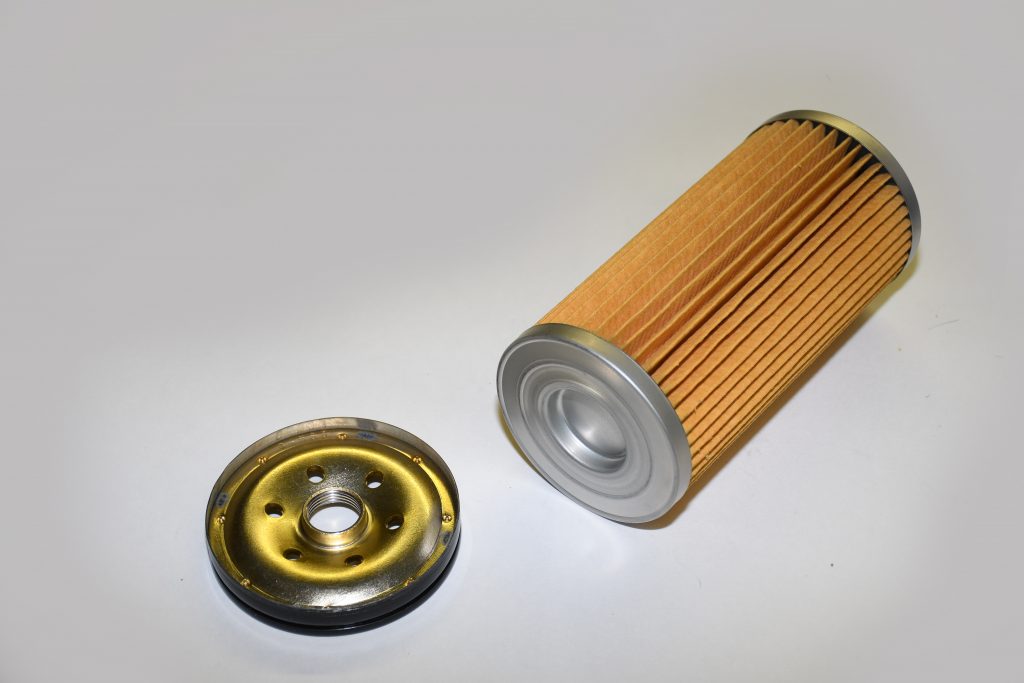
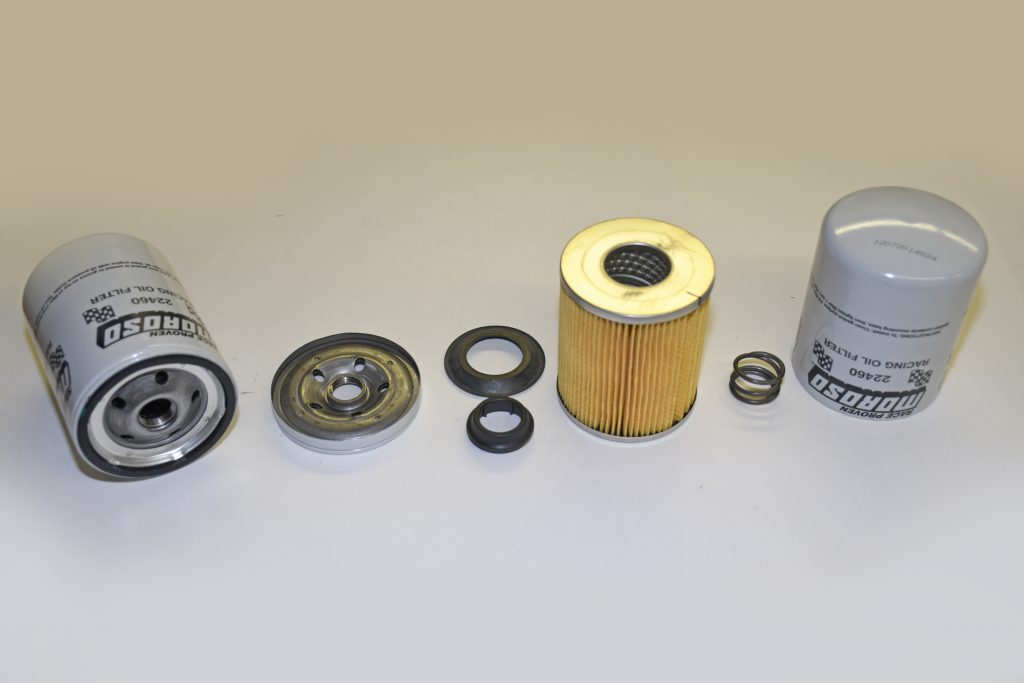
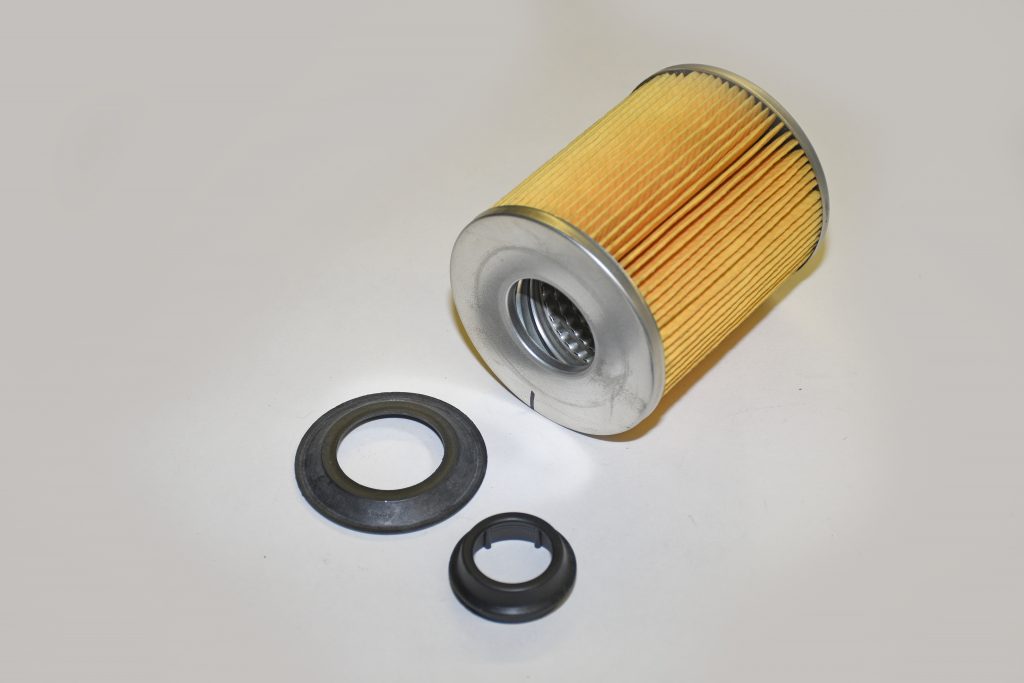

Great article but a few issues. You guys never state the flow rate for the moroso or the K&N. Additionally, it states the summit brand flow rate is 9-10 gallons an hour. Is that supposed to be minute?
Hey Mario, good catch. We’ll make the GPM/GPH edit, thanks for reading!
Doesn’t the “Standard” Small Block (Or Big Block for that matter.) mount vertically and already have a bypass in the filter adaptor? Why would you need an anti-drain back or a bypass?
No mention of the filter material. Probably because all selected are cellulose, which can and will break down. Also, no mention of Royal Purple’s filters, with their superior synthetic media.
[…] Oil Down: A Look Inside Several Popular Oil Filter Models: https://www.onallcylinders.com/2021/04/07/oil-down-a-look-inside-several-popular-oil-filter-models/ […]
[…] few weeks ago, we posted an article in which we cut open several engine oil filters to have a look inside. While it’s possible to improvise a homemade filter cutting tool, we […]
Left out is the rated pressure of the relief valves .
If the rated pressure is 20 psi and your engine idles at 40 psi when warm , then the relief valve will always be open and no filtration will be taking place and render the
” Filter ” useless .
It’s the pressure differential that opens the bypass.
If pressure in the entry cavity outside of the filter media is 20psi higher than the center filtered portion of the filter that enters the eng then the valve opens.